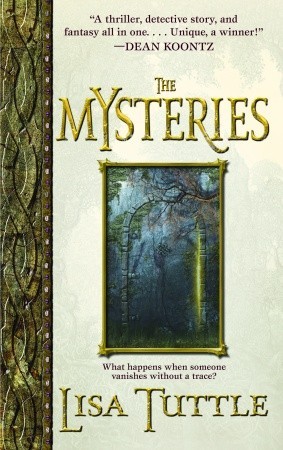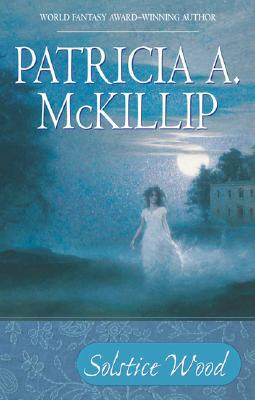In Celtic mythology, “thin places” are spots where this world and the Otherworld allow inhabitants to cross over. The most famous example is actually Halloween, followed by the tale of Tam Lin, and Cristina Rosetti’s classic poem “Goblin Market.”
Halloween, or Samhain (pronounced SAH-ween), took place just after the harvest and was thought to be a time when the boundaries between this world and the Otherworld, home to fairies and spirits, were nonexistent, and inhabitants could cross from one to the other — for a limited time only. Dressing up on Halloween is a centuries-old practice of people disguising themselves as spirits, so that the spirits who would otherwise haunt or torment them would keep looking. People also set out food and drink to appease said spirits. Eventually all of this became what we know as trick-or-treating.
Tam Lin is the second most famous example of thin places and Faery trickery. There are many versions of this old Scottish ballad, but they all center around three people: Tam Lin, a mortal man who is captive of the Fae, the woman who loves him, and the Fairy Queen (sometimes King). The Queen gives Tam Lin’s lover one chance to rescue Tam Lin: when the Fairy parade through on Halloween night, the woman must prove her love by grabbing onto Tam Lin and hanging on to him, all night. It sounds easy…. the trick, of course, is that the Fae turn Tam Lin into all manner of things: a statue of ice, a snarling wolf, a pillar of fire — to get her to let go so that Tam Lin would remain with them.
Christina Rosetti’s “Goblin Market” is probably one of the creepiest poems I’ve ever read. Two sisters, Laura and Lizzie, do their best to resist the tempting fruits of the Goblin Market. Prudent Lizzie closes her ears and eyes to the goblins, who emerge each day to trick some poor soul into eating their fruit, but curious Laura trades a lock of her golden hair for a piece of sumptuous fruit. Back at home, Lizzie worriedly takes on all the chores as Laura wastes away, losing interest in anything except another taste of goblin fruit. I won’t tell you the rest of the story, but this is definitely an allegory, and also can be read as very feminist.
But why am I talking about thin places now? It’s not Halloween. But Halloween isn’t the only time, or even place, where thin places can occur. In Rosetti’s poem, the goblins emerged from a particular glen that was considered haunted. People believe there are such places in the world — whether they are sacred spots such as a churchyard or Newgrange, or a simple turn in the road or path through the mountains — where it’s possible to slip in and out of the Otherworld, although there is debate about what or who is on the other side.
In the same tradition, here are three books about people encountering the Otherworld (and possibly its denizens).
 The Mysteries by Lisa Tuttle (2005)
The Mysteries by Lisa Tuttle (2005)
Lisa Tuttle has co-authored books with George R.R. Martin, but she writes a lot of horror. The Mysteries, however, is a suspenseful tale about private investigator Ian Kennedy, who’s hired to find a missing woman named Peri. Seems straightforward, right? Except Ian discovers Peri’s disappearance echoes Scottish myths. And Tuttle, genius that she is, weaves Ian’s own insecurities and mysteries into the mix. Ian’s father left when Ian was nine, and Ian’s girlfriend disappeared recently (or did she?). Finding Peri forces Ian to confront some truths, both mundane and fantastic. Chapters are intertwined with Celtic myths relevant to the story, and all of this combined makes The Mysteries a satisfying, haunting read.

 Winter Rose (1996) and Solstice Wood (2006) by Patricia McKillip
Winter Rose (1996) and Solstice Wood (2006) by Patricia McKillip
One of the best fantasy writers tackles the dangers of attraction to fairies in two books that take place generations apart. In the first, free-spirit farmer’s daughter Rois Meillor falls in love with the secretive Corbet Lynn, come to upstate New York to renovate his family’s estate and whose father is rumored to have murdered his grandfather; in the second, bookstore owner Sylvia Lynn returns to what is now known as Lynn Hall, and with the help of local seamstresses, takes on a new role as gatekeeper — guarding the portals between our world and the Otherworld. The books are very different from each other — Winter Rose is more ethereal and dreamlike, while Solstice Wood is grounded in the modern world. Both are highly enjoyable.
 The Glittering World (2015) by Robert Levy
The Glittering World (2015) by Robert Levy
Playwright Robert Levy weaves a dark horror tale about Blue, a New York chef who has lived a nomadic life and who returns home to remote Canada to settle his grandmother’s affairs. Traveling with him are Gabe, a young admirer; Elisa, Blue’s oldest friend; and Jason, Elisa’s husband. Almost as soon as they arrive, Blue is overwhelmed by memories of mysterious, horrifying events from his childhood — and he and Elisa disappear without a trace. Jason and Gabe launch a search which leads them to delve into the area’s history and folklore. The story might be a metaphor for fairy trickery: this starts out as Blue’s story and ends up being Gabe’s. Levy’s book isn’t easily categorized — don’t try; just go along for the ride. The characterizations — and the messy, intertwined relationships of the characters — is the strength of this story. The pacing is sometimes off because of Levy’s prose, but that’s not at all a deal-breaker in terms of the payoff. Some advice? Don’t read this at night and don’t read it near the woods.
Don’t Miss: Don’t Breathe A Word (2011) by Jennifer McMahon, whose books usually center around two people hiding a secret (and in this case it’s a Really Bad One); and Alex Bledsoe’s mesmerizing Tufa series, begun in 2011 and set in Tennessee: The Hum and the Shiver, Wisp of a Thing, Long Black Curl, and Chapel of Ease — this series honestly deserves its own post.
When all is said and done, remember — never make a deal with a fairy. If you have other stories to share as examples of this warning, post them in the comments below!

No Comments